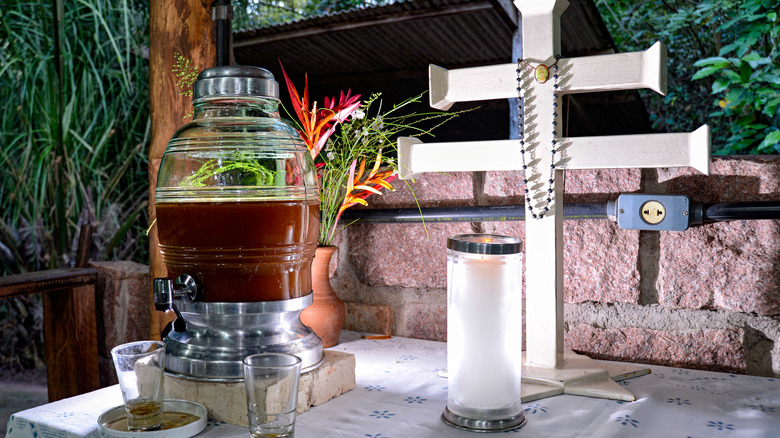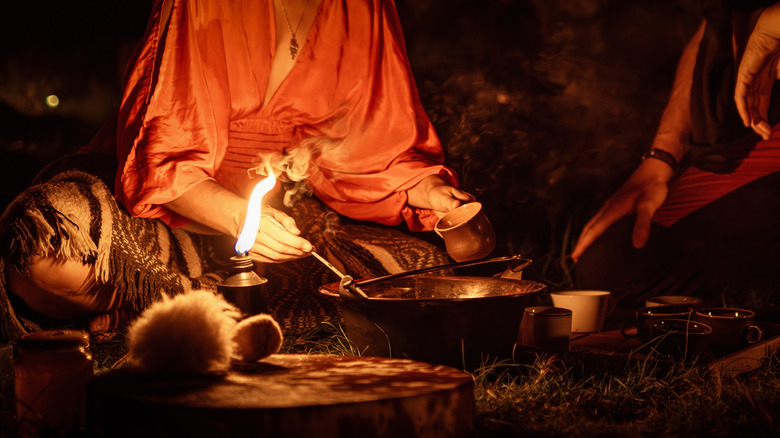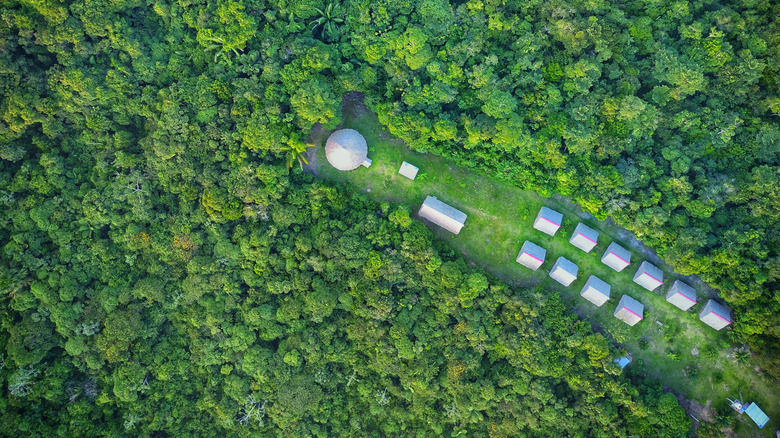The Safest Way To Experience An Authentic Ayahuasca Retreat In Central And South America
Ayahuasca is in vogue at the moment. As one of the most interesting and unusual trends to pop up as part of the global wellness phenomenon in the last decade, this psychedelic medicine is both popular and misunderstood, a mainstay of traditional South and Central American healing practices and also an experience lauded by celebrities from Lindsey Lohan to Sting.
But while this obscure practice has exploded into Western wellness culture, there is still a lot of misinformation and confusion that surrounds "la abuela ayahuasca" (Spanish for "grandmother ayahuasca"). This might not be a huge surprise — after all, this is a psychedelic plant that promises to break down barriers in your mind and force you to confront and deconstruct your sense of self. However, it does mean that taking part in an ayahuasca ceremony can be a risky business for the unprepared.
In order to experience an ayahuasca ceremony, you used to have to travel to the hidden heart of the Peruvian jungle or the Amazonian rainforest. However, these days, retreats can be found almost everywhere, from Ecuador and Portugal to the Netherlands and Costa Rica. Nevertheless, the experience can be highly delicate and sensitive, and it is vital to find an experienced, trustworthy, and knowledgeable guide or shaman to lead you on your journey. As a result, it is almost always safer and more authentic to go on a stress-free wellness vacation to South or Central America to try ayahuasca and to work with a member of an Indigenous community where the use of the plant has been passed down through generations.
What is ayahuasca and tips for finding a guide
Before diving into how to safely experience an ayahuasca retreat, it is prudent to understand what ayahuasca actually is. When we talk about the ayahuasca plant, we are talking about two different plants that are combined to create the brown tea ingested during the ceremony. The leaves of Psychotria viridis contain the drug DMT, which causes the vivid visions and out-of-body experiences that are the common effects of an ayahuasca trip, while the vines of Banisteriopsis caapi, which contain MAOIs, work to slow down certain functions in the gut to allow the DMT to be absorbed into the bloodstream.
In places like Mexico, Colombia, and Peru, ayahuasca is treated as a medicine. It's not used in the same way as other recreational drugs, and as such, it is extremely important that anyone wishing to experience the benefits should respect the power of the plant, as well as its origins. This is the first thing to consider when looking for an ayahuasca ceremony, and why choosing the right shaman or guide is a must.
Now that ayahuasca has broken through into mainstream wellness culture, there are plenty of under-trained, inexperienced, and even downright scammy guides out there. This is why seeking out places where the plant comes from, like Peru, Brazil, Bolivia, and Colombia, where ayahuasca is a traditional part of the culture, is the right way to go. For example, finding a taita (Colombian shaman) or paje (Brazilian shaman) who has enough personal and generational experience to be able to manage your journey is of paramount importance. Indigenous communities like the Shipibo in Peru have used ayahuasca for centuries and understand the benefits and the risks intimately.
How to have a safe, authentic ayahuasca experience
When you undertake an ayahuasca ceremony, it is likely that you will lose yourself. The experience holds a mirror up to your soul, folding your consciousness in on itself and exposing aspects of your being that you may have repressed. The experience can be enlightening and mind-expanding but also intense and hard to deal with, so feeling comfortable and trusting the place and the people you are with is an important element. Recommendations from friends are worthwhile, and it is always a good idea to pay attention to your intuition. If something doesn't feel right, then it probably isn't.
Your mindset going into an ayahuasca ceremony will have a significant impact on your experience. Many people find it helpful to set an intention at the beginning of the experience, partly to give you a focus, partly as a way to define what you want to heal, and partly to give you a fixed point to come back to, if you find yourself spinning off in directions you aren't comfortable with.
Finding the right ayahuasca ceremony is something extremely personal that requires significant research. Recommendations are a tricky business, but here are a few retreats that are a good place to start. Nimea Kaya, outside Pucallpa, Peru, is run by Shipibo healers and offers a supportive, professional atmosphere. Gaia Sagrada, hidden in the deep folds of the Ecuadorian Andes, combines traditional ceremonies with beautiful, pristine mountain landscapes. Finally, Soltara looks out over the Gulf of Nicoya on Costa Rica's Pacific coast, offering an exquisite, relaxing location for trauma-focused ayahuasca retreats. Do remember that some South American destinations can be dangerous; always stay in touch with friends and family wherever you go.


